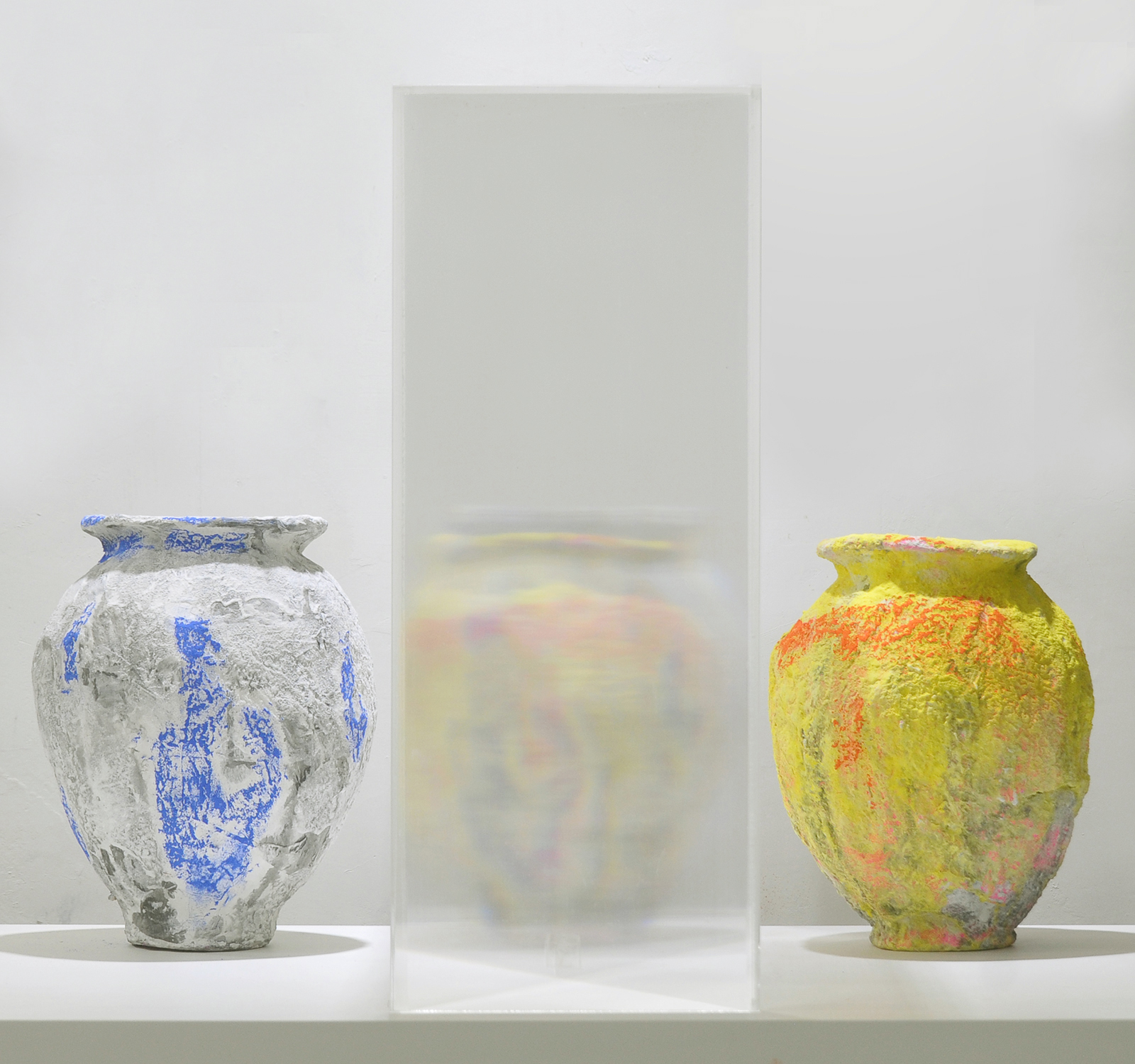Lee Jungyeol
Naming, 2022
Mixed media
60 x 50 x 60 cm
Unique work
Certificate of authenticity included
US$5,000
Show your appreciation with a like
Purchasing opens early August 2025. Be the first to know!
Want a reminder? Join our mailing list.
About the work
- Materials
- Mixed media
- Dimensions
- 60 x 50 x 60 cm
- Frame
- Frame not included
- Signature
- Hand-signed by Jungyeol lower right corner
- Certificate Of Authenticity
- Certificate included
“Naming” is an installation that explores the fragile line between what is real and what only seems to be. Two ceramic vases are placed on either side of a transparent acrylic box, which has a layer of optical film attached. Although the box itself is empty, a new image appears within it—a blurred form that combines the colors and shapes of the two vases. This illusion has no weight and no physical presence, yet it looks as if it exists. The work questions how easily our perception can be shaped or deceived. What we see is not always what is really there. Between two solid objects, a third form emerges—one that cannot be touched, only seen. Naming invites viewers to reflect on how we define something as “real,” and how often what we think we see is shaped by context, expectation, or desire.
About the artist
A long-standing collaborator in the evolving currents of modern art, Lee Jungyeol has devoted nearly four decades to joint explorations of memory, time, and the residual poetry of everyday objects. Beginning his artistic journey in his early twenties, Lee has forged a practice that privileges dialogue, shared vision, and the collective reimagining of the overlooked. Drawing on nearly six decades of life experience, he stands as a testament to the power of sustained inquiry and the quiet revolution of found materials. Central to Lee’s oeuvre is an almost archaeological fascination with the “abandoned” and “unmemorialised”—fragments that bear the imprint of functionality yet have slipped beyond our conscious regard. His acclaimed work Cement Monitor exemplifies this ethos. By returning actual coffee cups to the very marks left by their predecessors, Lee stages a poignant act of restitution: not simply resurrecting a lost form, but evoking the unconscious yearnings, authorities, and desires that once animated these vessels. In his own words, “It is not a Starbucks, but a self-portrait and interpretation of a modern person who wants to look like a Starbucks,” underscoring how personal identity, corporate symbolism, and collective memory coalesce in the residue of daily ritual. Collectors and fellow artists alike are drawn to Lee Jungyeol’s work for its subtle alchemy—transforming industrial detritus into carriers of contemporary longing. His practice remains rooted in collaboration and experimentation, inviting us to reconsider what we discard, what we memorialise, and the hidden narratives encoded in the traces of time.


